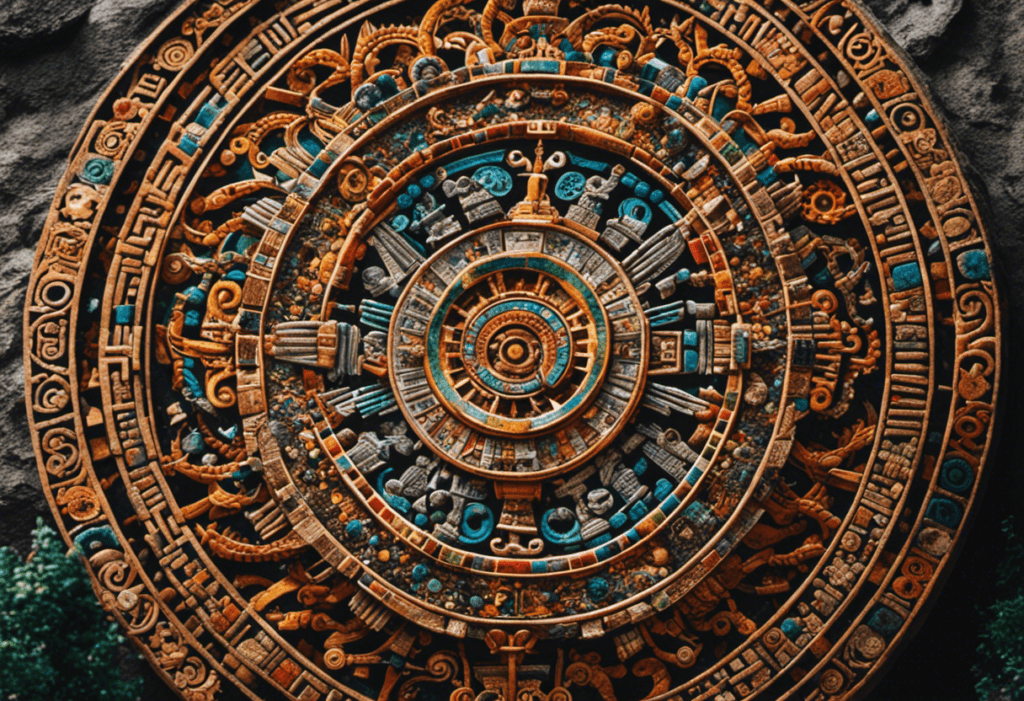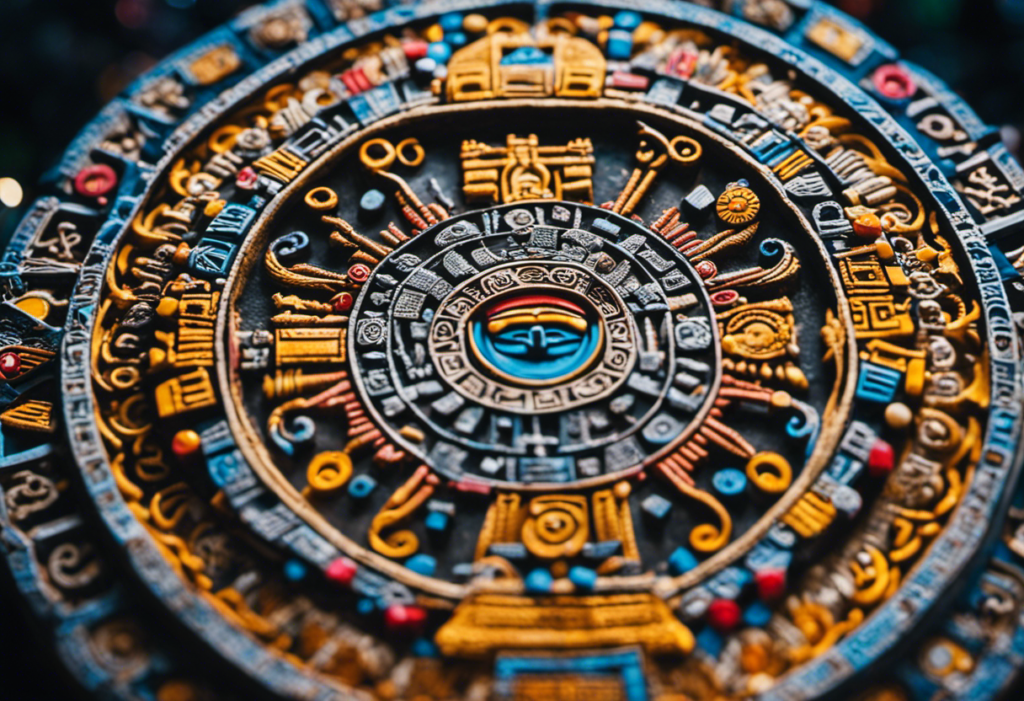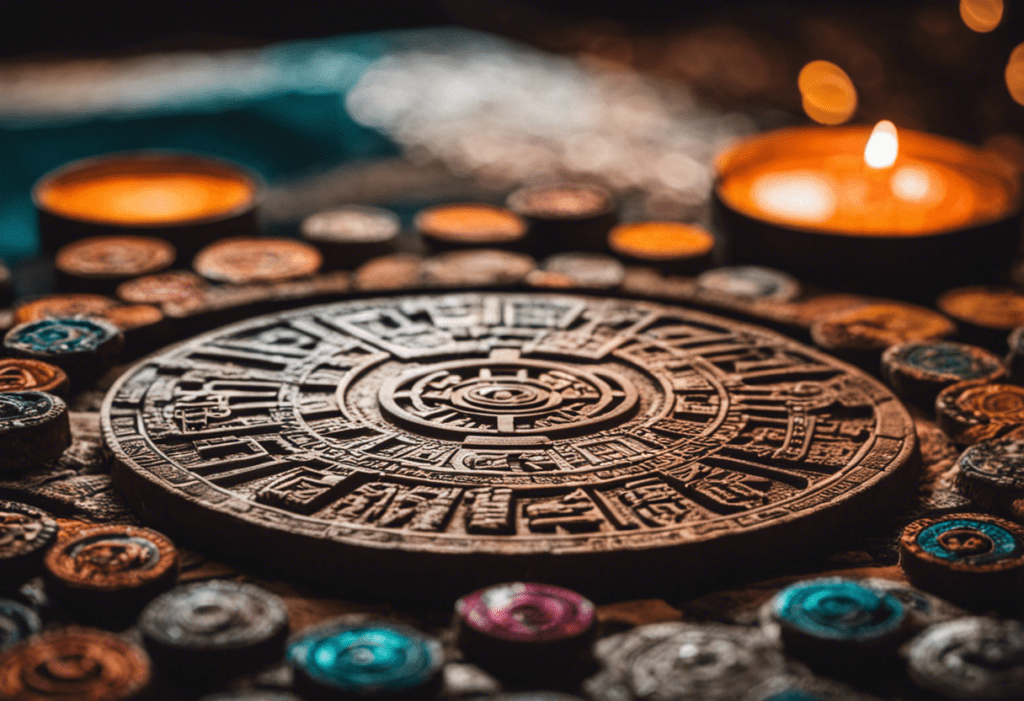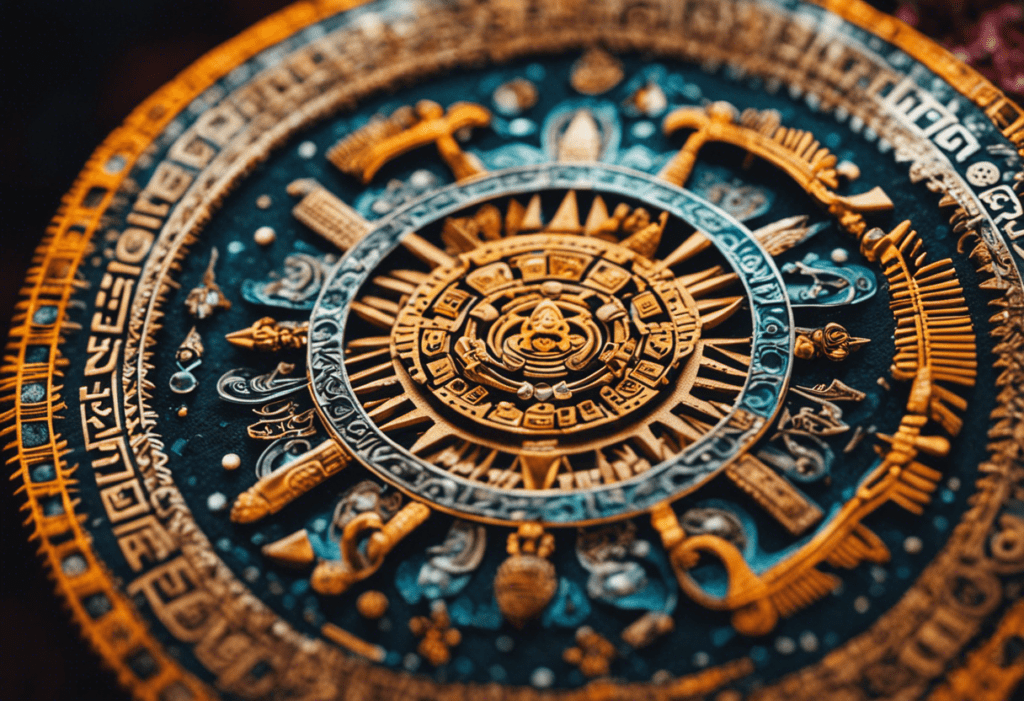The origins of the Aztec calendar have long fascinated historians, archeologists, and anthropologists. Its rich symbolism and intricate design reflect the complex society and cultural heritage of the ancient Aztec civilization.
By examining the predecessors of the Aztec calendar, the influence of Mesoamerican cultures, the innovations in calendar design, the role of astronomy, and the ritual and spiritual significance, we can gain a deeper understanding of this remarkable artifact.
This article explores the origins and evolution of the Aztec calendar, shedding light on its origins and significance.
Key Takeaways
- The Aztec calendar was influenced by the calendrical systems developed by earlier civilizations such as the Olmecs, Mayans, and Mixtecs.
- The Mayan calendar had a significant influence on the Aztec calendar, with both civilizations placing importance on observing celestial events and incorporating complex cycles.
- The Aztec calendar incorporated features from the Mayan calendar, as well as the knowledge of astronomy and mathematics contributed by the Mixtecs.
- The design and functionality of the Aztec calendar demonstrated advanced mathematical and astronomical knowledge, aligned with the solar year, and served as a cultural symbol connecting to religious beliefs.
The Predecessors of the Aztec Calendar
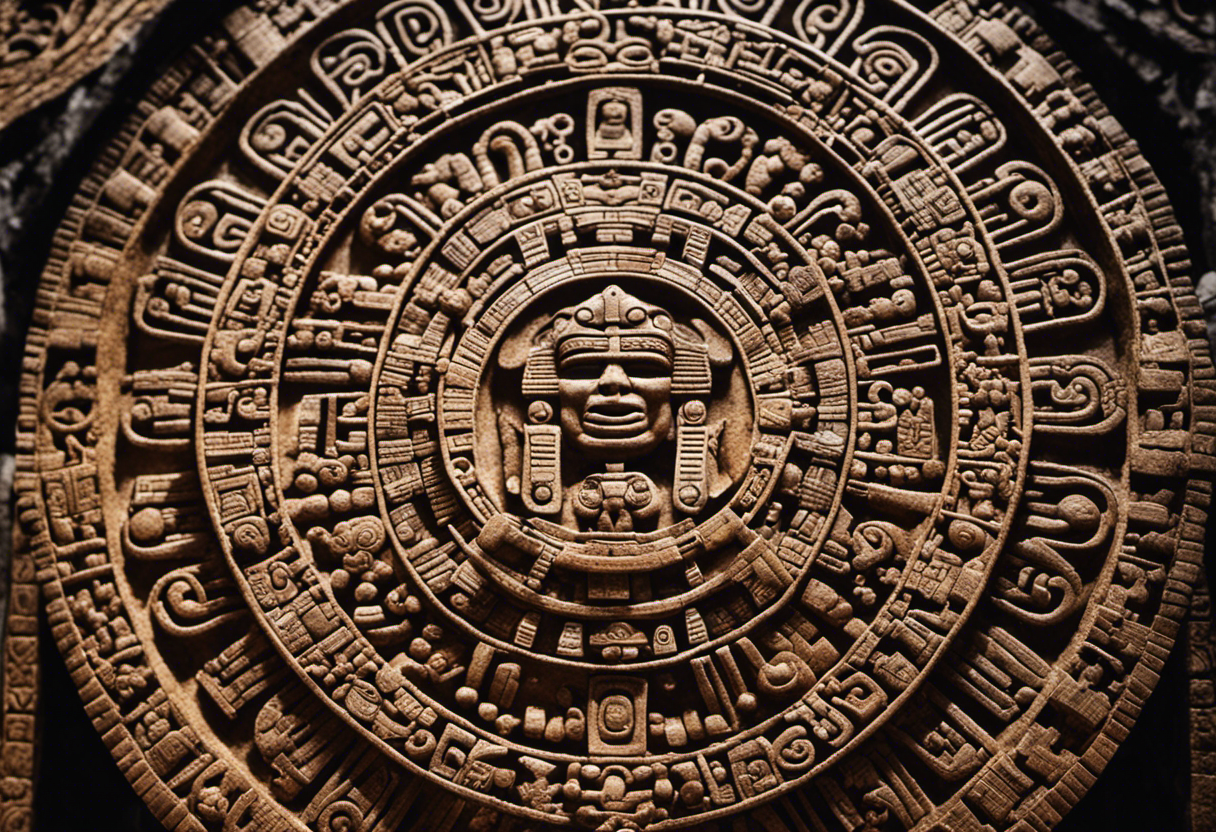

Before the development of the Aztec calendar, there were several earlier Mesoamerican civilizations that laid the groundwork for its creation. These predecessors of the Aztec civilization include the Olmecs, the Mayans, and the Mixtecs. Each of these civilizations had their own unique calendars that influenced the Aztec calendar in various ways.
The Olmecs, considered the ‘mother culture’ of Mesoamerica, were the first to develop a complex calendrical system. Their calendar was based on a combination of astronomical observations, religious beliefs, and agricultural practices. The Olmecs’ calendar paved the way for future Mesoamerican civilizations to develop their own calendars.
The Mayans, who inhabited the region before the Aztecs, had an incredibly advanced calendar system. Their calendar was based on overlapping cycles, including a 260-day sacred calendar and a 365-day solar calendar. The Mayans also developed a Long Count calendar that extended far into the future. The Aztecs drew inspiration from the Mayan calendar and incorporated some of its features into their own.
Lastly, the Mixtecs, a civilization that thrived in southern Mexico, also contributed to the development of the Aztec calendar. The Mixtecs were skilled astronomers and mathematicians, and their complex calendar system influenced the Aztecs’ understanding of time and space.
Influence of Mesoamerican Cultures on the Aztec Calendar
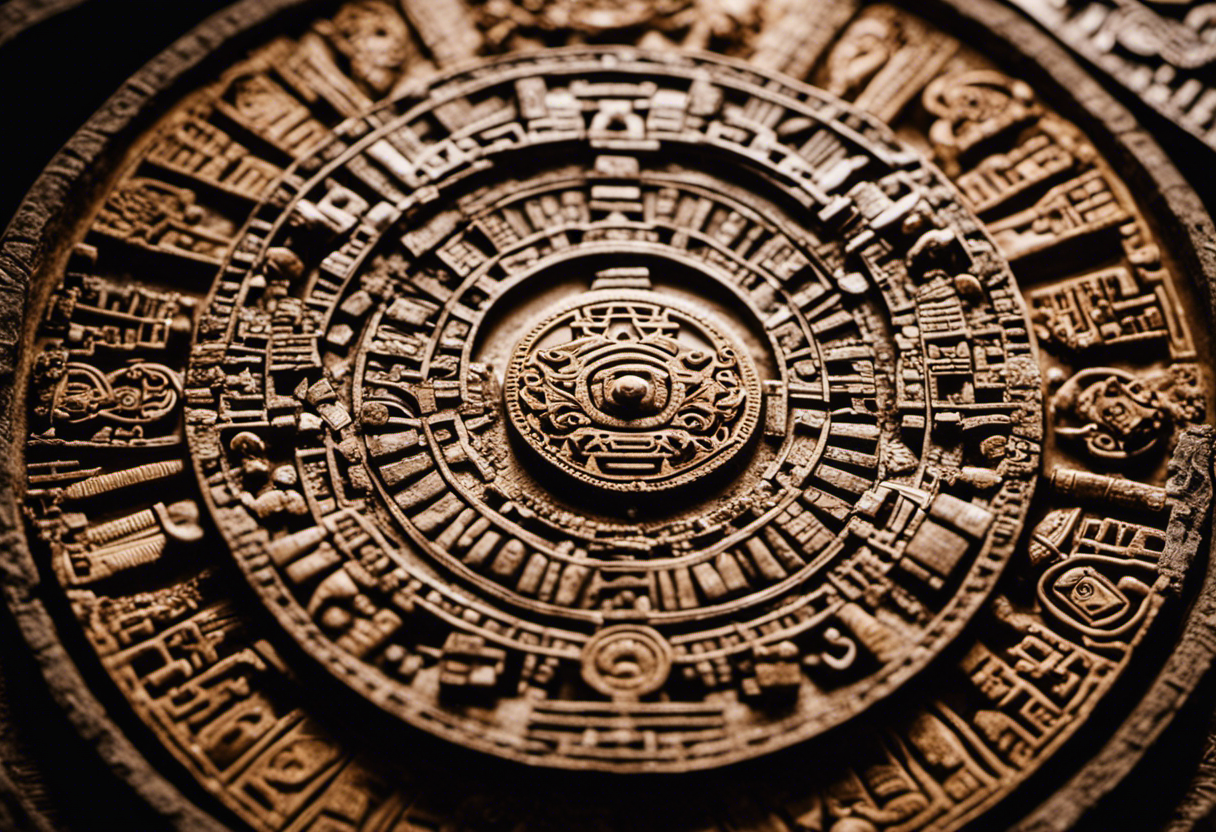

The Aztec calendar, while unique in its design and structure, was influenced by the cultures that preceded it in Mesoamerica. The predecessors of the Aztec calendar, such as the Olmec and Maya civilizations, played a significant role in shaping its form and function.
These Mesoamerican cultures had their own sophisticated calendrical systems, which the Aztecs incorporated and adapted into their own calendar. The influence of these cultures on the Aztec calendar highlights the interconnectedness and cultural exchange that existed in ancient Mesoamerica.
Predecessors of Aztec Calendar
In the development of the Aztec calendar, various Mesoamerican cultures played a significant role during the time of its creation. The Aztecs were heavily influenced by the Mayan calendar, which had been developed centuries earlier. The Mayan calendar was renowned for its accuracy and intricate understanding of celestial events. This influence is evident in the structure and design of the Aztec calendar.
• The Mayan calendar’s complex system of cycles and interlocking calendars inspired the Aztecs to create their own calendar with similar features.
• The connection to celestial events was a crucial aspect of both calendars. Both civilizations placed great importance on observing the movements of the sun, moon, and stars to predict agricultural cycles and religious festivals.
Mesoamerican Influences on Calendar
Mesoamerican cultures, such as the Mayans and Olmecs, exerted a profound influence on the development and design of the Aztec calendar.
The predecessors of the Aztec calendar can be traced back to the Olmec civilization, which flourished from 1200 BCE to 400 BCE. The Olmecs developed the concept of a 365-day solar calendar, which served as the foundation for the later Mesoamerican calendars.
The Mayans, another influential civilization in Mesoamerica, made significant innovations in calendar systems. They developed a complex and precise calendar, combining both solar and ritual cycles, which influenced the calendar of the Aztecs.
The Aztecs, building upon the knowledge and advancements of their Mesoamerican predecessors, further refined the calendar by incorporating their own religious beliefs and practices. This resulted in a highly sophisticated and accurate calendar system that played a central role in the Aztec society.
Cultural Significance of Calendar
An understanding of the cultural significance of the calendar can be gained by examining the influence of various Mesoamerican cultures on the development of the Aztec calendar. The Aztecs inherited their calendar system from their predecessors, such as the Maya and the Olmec. This cultural exchange can be seen in the similarities between the calendars of these civilizations.
The Aztecs adopted and adapted the concepts, symbols, and practices of these earlier cultures to suit their own needs. The calendar played a crucial role in the religious and social life of the Aztecs, guiding their agricultural practices, religious ceremonies, and even their daily lives. It provided a framework for understanding the passage of time and the cyclical nature of life, reflecting the historical context and cultural practices of the Mesoamerican civilizations that preceded the Aztecs.
The influence of the Maya civilization on the Aztec calendar can be seen in the use of a 365-day solar calendar, as well as the incorporation of astronomical observations and celestial events.
The Olmec civilization influenced the Aztec calendar through its complex mathematical and astronomical knowledge, which the Aztecs incorporated into their own calendar system, giving it a more sophisticated and accurate measurement of time.
The Aztec Innovations in Calendar Design


Throughout their history, the Aztecs consistently revolutionized calendar design, pushing the boundaries of timekeeping and forging new paths in the field. The Aztec calendar was not only a practical tool for tracking time but also held immense cultural significance. The innovations in their calendar design reflect the Aztecs’ deep understanding of astronomy and their desire to align their religious and agricultural practices with the celestial bodies.
One of the most notable Aztec calendar innovations was the development of a complex system of interlocking calendars. The Aztecs used multiple calendars concurrently, each with its own purpose and cycle length. For instance, the Xiuhpohualli, or the ‘year count,’ consisted of 365 days and was primarily used for agricultural and seasonal purposes. On the other hand, the Tonalpohualli, or the ‘day count,’ was a 260-day calendar that governed religious ceremonies and divination.
Another significant innovation was the Aztec calendar’s inclusion of leap years. Unlike many other ancient calendars, which did not account for the extra quarter-day in the solar year, the Aztecs devised a method to rectify this discrepancy. By adding five additional days to the end of their calendar year, the Aztecs ensured that their calendar closely aligned with the solar year.
The Aztec calendar’s intricate design and attention to detail demonstrate the Aztecs’ advanced mathematical and astronomical knowledge. Their innovations in calendar design not only facilitated the tracking of time but also served as a powerful cultural symbol, connecting the Aztec people to the cosmos and their religious beliefs.
The Role of Astronomy in the Aztec Calendar
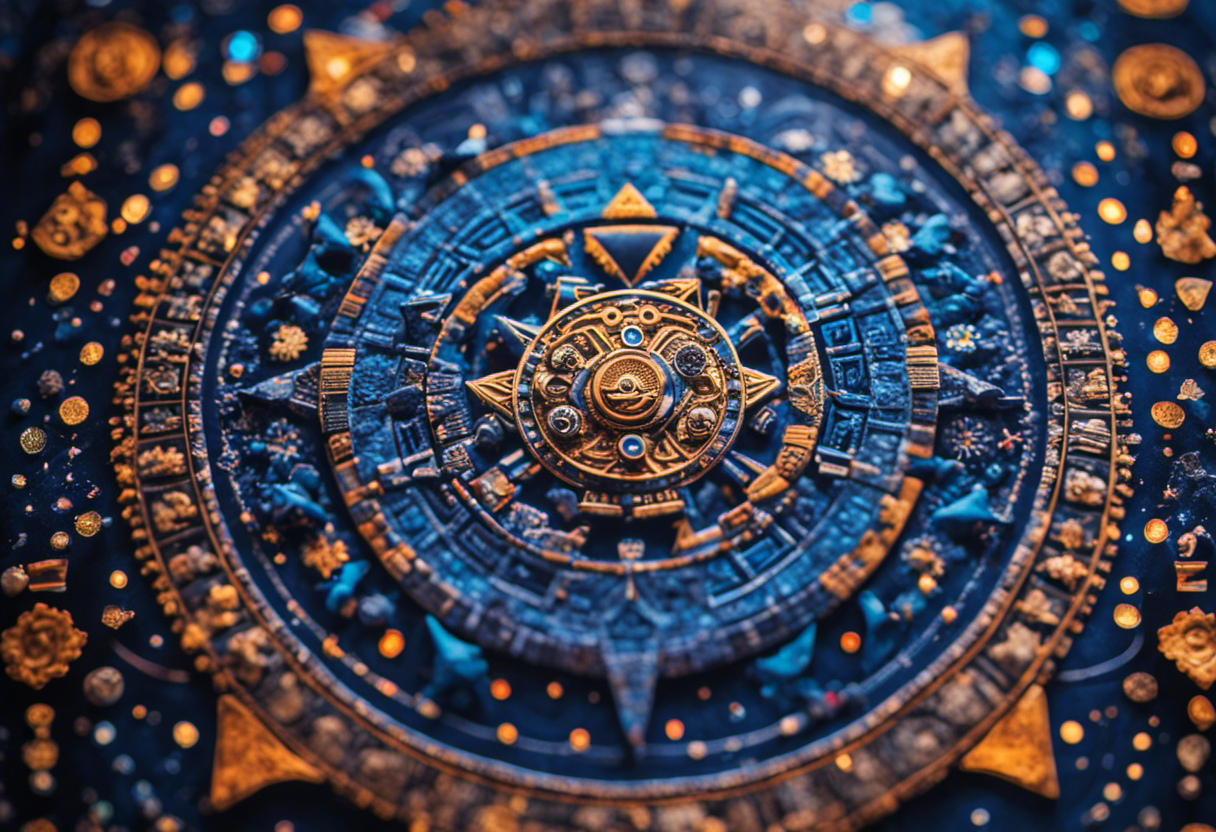

The Aztec calendar’s intricate design and calculations were heavily influenced by the Aztecs’ deep understanding of celestial movements and the role of astronomy in their culture. Astronomy played a significant role in the development and interpretation of the Aztec calendar, and its cultural significance cannot be understated.
The role of astronomy in the Aztec calendar can be seen in the following ways:
- Observation of celestial bodies: The Aztecs closely observed the movements of the sun, moon, and stars, which helped them determine the length of a solar year, the phases of the moon, and the occurrence of eclipses. This astronomical knowledge formed the basis of the calendar’s calculations.
- Alignment with celestial events: The Aztec calendar incorporated specific dates and rituals that were aligned with astronomical events. For example, the new fire ceremony, known as the xiuhmolpilli, was celebrated every 52 years to mark the completion of a full cycle of the calendar. This ceremony was performed to ensure the sun’s continued movement across the sky.
The role of astronomy in the Aztec calendar highlights the close connection between celestial movements and human life. By incorporating astronomical observations and aligning their rituals with celestial events, the Aztecs sought to establish a harmonious relationship with the cosmos, emphasizing the cultural significance of astronomy in their society.
Ritual and Spiritual Significance of the Aztec Calendar
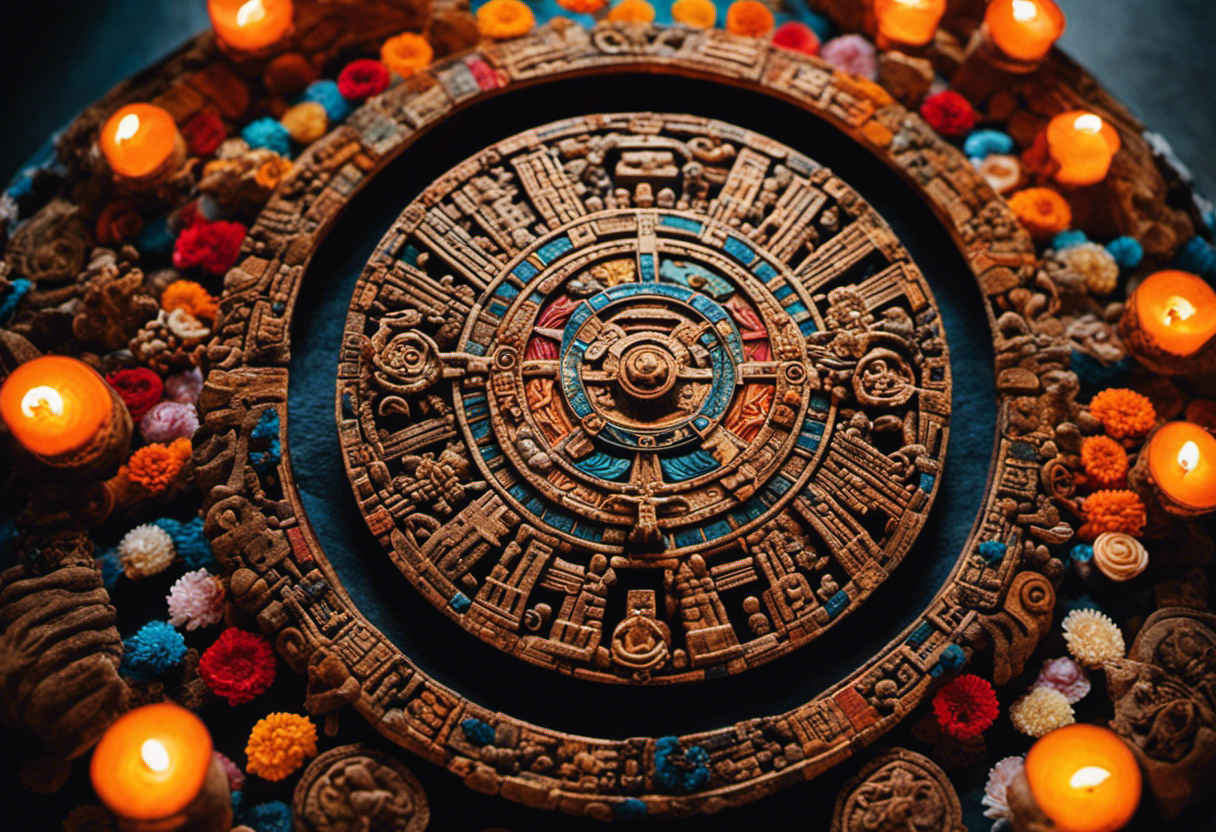

With its intricate symbolism and precise calculations, the Aztec calendar held immense ritual and spiritual significance for the people of ancient Mesoamerica. The calendar was not only a tool for tracking time but also a reflection of the Aztec worldview and their relationship with the divine. The ritual practices associated with the calendar were deeply embedded in Aztec society and played a crucial role in their religious ceremonies.
The Aztec calendar was believed to represent the cyclical nature of time and the continuous cycle of life, death, and rebirth. It was seen as a sacred instrument that connected the earthly realm with the spiritual realm. The calendar was used to determine auspicious dates for important events such as religious ceremonies, agricultural activities, and warfare. The Aztecs believed that by aligning their actions with the cycles of the calendar, they could ensure the favor of the gods and maintain harmony in the world.
The symbolic meanings embedded in the calendar were also of great importance. The various glyphs and images represented different deities, celestial bodies, and natural elements. Each day had its own unique combination of symbols, which were believed to influence the events and energies of that day. By understanding and interpreting these symbols, the Aztecs could gain insights into the spiritual forces at play and make decisions accordingly.
Preserving and Studying the Aztec Calendar Today
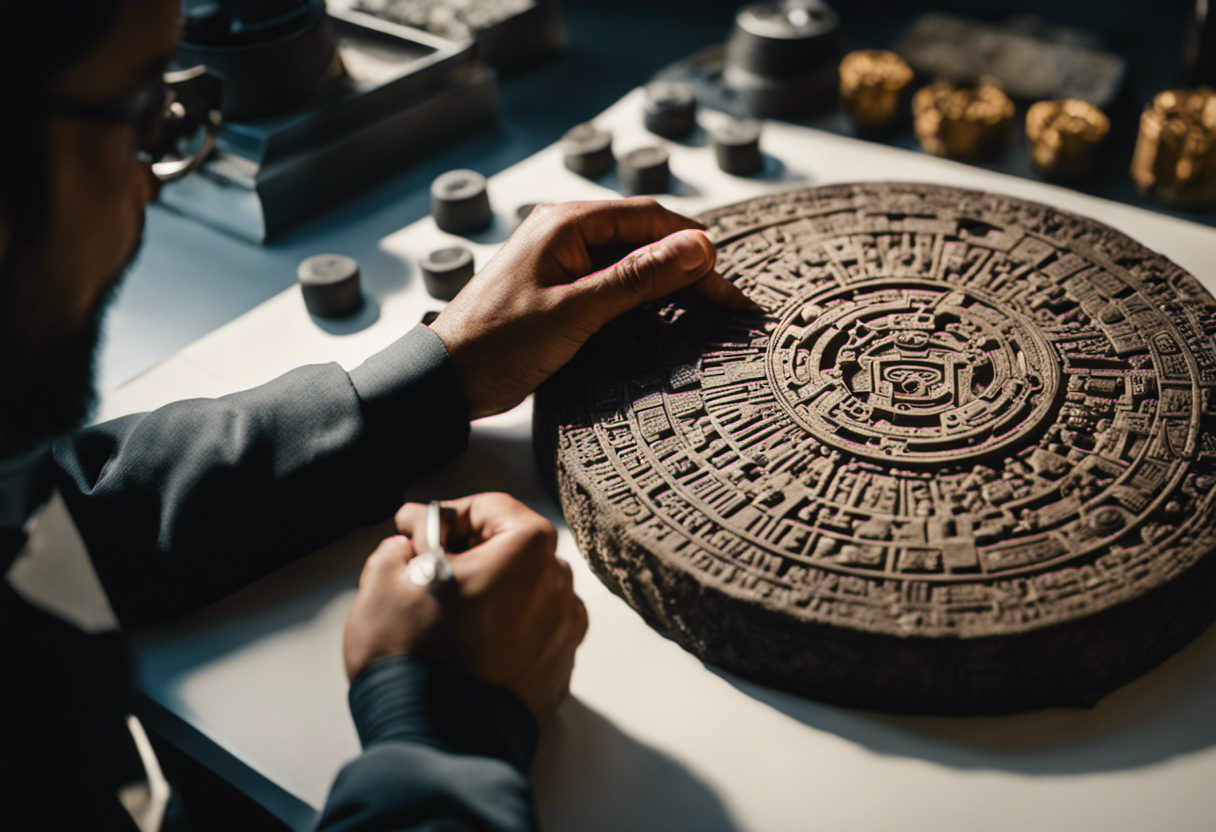

One significant aspect of the Aztec calendar is its preservation and ongoing study by scholars and researchers in the present day. The preservation techniques employed ensure that this ancient artifact remains intact for future generations to study and understand. Some of the techniques used include controlled temperature and humidity environments, light filters, and regular inspection and maintenance. These measures help prevent deterioration and maintain the integrity of the calendar.
Modern applications of the Aztec calendar extend beyond its preservation. Researchers are using advanced imaging technologies to analyze the calendar’s intricate designs and decipher its complex system of timekeeping. By studying the calendar, scholars can gain valuable insights into Aztec culture, beliefs, and cosmology. Additionally, the calendar serves as a symbol of cultural identity and heritage for the Aztec people and continues to be an important part of their cultural practices and traditions.
Conclusion
In conclusion, the origins of the Aztec calendar can be traced back to the influences of earlier Mesoamerican cultures and the innovative designs of the Aztecs themselves.
Astronomy played a crucial role in the development of this calendar, which held ritual and spiritual significance for the Aztec people.
Today, efforts are being made to preserve and study this ancient calendar, allowing us to further understand the rich history and cultural practices of the Aztec civilization.
Through objective analysis and evidence-based research, we can continue to unravel the mysteries of the Aztec calendar and its profound significance.

